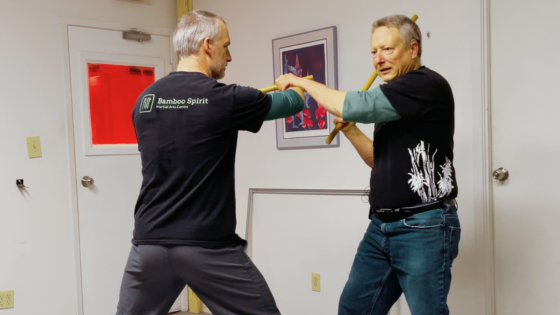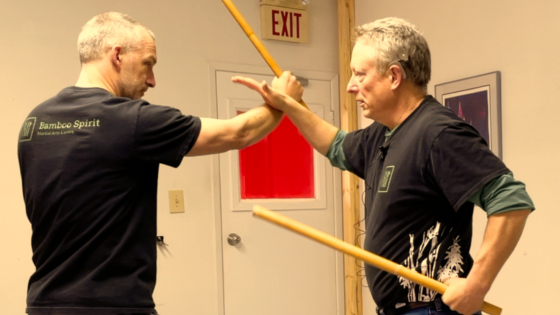The Study of Modern Arnis
As has been alluded to before, Modern Arnis has a very broad knowledge base and can be broken down into parts to be studied as follows:
- (1) traditionals;
- (2) Balintawak roots;
- (3) empty hand translations;
- (4) joint locks
- (5) ground controls and
- (6) study of the anyos (forms).
In addition to all this, one must not forget “the flow” and the concept of “counter for counter.” Modern Arnis’s roots are Filipino, but the rest of the art is global.
The traditionals consist of Espada y Daga (crossada and palis palis) and movements such as figure 8, reverse figure 8, banda y banda, rompida, double zero, reverse double zero, abanico double action, abanico hirada, planting rice and so on. The below video covers the reverse figure 8.
If you are not able to view this video, click here.
Then you need to consider the Professor’s study of Balintawak and its’ influence on Modern Arnis, particularly in the tapi tapi he taught in the decade before his untimely passing.
When you fuse the traditionals with the tapi tapi, you are playing with a vast amount of material. Yet another layer is added when left-handed material is factored into the equation.
If you are not able to view this video, click here.
I loved how the Professor translated stick movements into empty-handed movements such as block check counter, de Cadena, sinawali boxing, reverse sinawali boxing, and others. I have discovered several connections between the above and my kata movements from Chung Do Kwan TKD. A light bulb would often go off when I saw a connection.
If you are not able to view this video, click here.
Add in the influence of Professor Wally Jay through the joint locks.
I remember one seminar where the Professor used me as uke for the standing center lock. Oh man, talk about pain. My fingers were not right for about a month after that. The professor’s joint locks were incredible, and he had a beautiful flow. He also insisted that we learn the ground control techniques of Modern Arnis, which the various Masters have expanded.
If you are not able to view this video, click here.
Lastly, he insisted that we know the anyos (forms) of Modern Arnis. Some just go through the motions of the anyos and are content with the partner training drills of Modern Arnis. I think that they are doing themselves a disservice in this regard. The anyos contain many self-defence techniques ranging from joint locks, sweeps, throws, standard and reverse sinawali boxing, gunting, grappling moves, and countermoves. It would be well worth the time to learn the anyos and spend time on them.
If you are not able to view this video, click here.
The most important lesson, however, that the Professor left with us was learning how to make connections between various concepts. “Making the connections” is probably one of the most fundamental underlying concepts of Modern Arnis. If you don’t have this, all you have is tons of unrelated material. Learn to connect the material, and you’ll be better at it!
Share this post:
- Click to share on Twitter (Opens in new window)
- Click to share on Facebook (Opens in new window)
- Click to share on LinkedIn (Opens in new window)
- Click to share on WhatsApp (Opens in new window)
- Click to share on Nextdoor (Opens in new window)
- Click to share on Pinterest (Opens in new window)
- Click to email a link to a friend (Opens in new window)
Brian Johns
Related Posts
3 Comments
Leave a Reply Cancel reply
Categories
- Arnis/Kali/Eskrima (113)
- Book Review (8)
- DVD Reviews (3)
- Guest Post (4)
- Inspiration (24)
- Martial Arts (99)
- My story (92)
- Safety (14)
- Tips & tricks (6)
- Uncategorized (3)
- YouTube Videos (8)






[…] a joint lock flow, showcasing another area of Modern Arnis. As alluded to in this previous post, Modern Arnis is more than just stick fighting. We cover stick fighting, empty hands against a cane, joint locks, […]
[…] locks. In any case, he profoundly influenced Professor Remy Presas in this area. In the early Modern Arnis instructional videos of the 1980s, one can see that Professor Presas’ joint locks were crude […]
[…] The Study of Modern Arnis […]